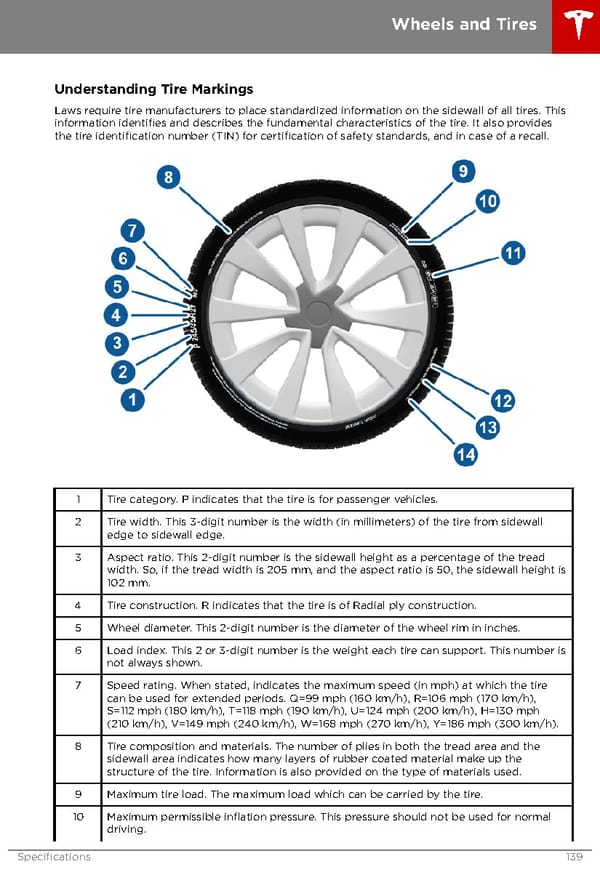Wheels and Tires Understanding Tire Markings Laws require tire manufacturers to place standardized information on the sidewall of all tires. This information identifies and describes the fundamental characteristics of the tire. It also provides the tire identification number (TIN) for certification of safety standards, and in case of a recall. 1 Tire category. P indicates that the tire is for passenger vehicles. 2 Tire width. This 3-digit number is the width (in millimeters) of the tire from sidewall edge to sidewall edge. 3 Aspect ratio. This 2-digit number is the sidewall height as a percentage of the tread width. So, if the tread width is 205 mm, and the aspect ratio is 50, the sidewall height is 102 mm. 4 Tire construction. R indicates that the tire is of Radial ply construction. 5 Wheel diameter. This 2-digit number is the diameter of the wheel rim in inches. 6 Load index. This 2 or 3-digit number is the weight each tire can support. This number is not always shown. 7 Speed rating. When stated, indicates the maximum speed (in mph) at which the tire can be used for extended periods. Q=99 mph (160 km/h), R=106 mph (170 km/h), S=112 mph (180 km/h), T=118 mph (190 km/h), U=124 mph (200 km/h), H=130 mph (210 km/h), V=149 mph (240 km/h), W=168 mph (270 km/h), Y=186 mph (300 km/h). 8 Tire composition and materials. The number of plies in both the tread area and the sidewall area indicates how many layers of rubber coated material make up the structure of the tire. Information is also provided on the type of materials used. 9 Maximum tire load. The maximum load which can be carried by the tire. 10 Maximum permissible inflation pressure. This pressure should not be used for normal driving. Specifications 139
 Tesla Model 3 | Owner's Manual Page 139 Page 141
Tesla Model 3 | Owner's Manual Page 139 Page 141